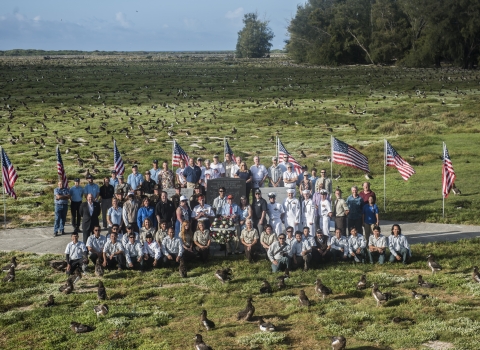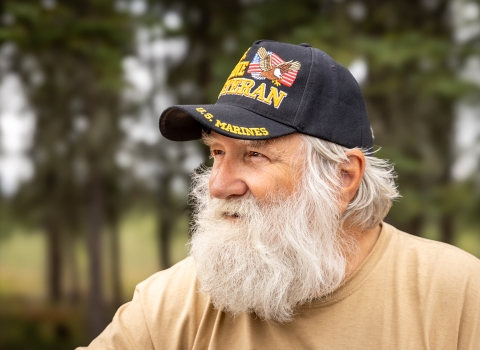A Natural Resource Damage Assessment settlement has lead to the restoration of 350 acres at Blue Heron Slough
After many years in the making, the U.S. Fish & Wildlife Service and partners marked a milestone in a massive habitat restoration project for salmon and other important species near Everett, Washington on September 1.
As part of a Natural Resource Damage Assessment & Restoration settlement, nearly 350 acres of estuary and upland habitat at Blue Heron Slough, along Interstate 5 in the Snohomish River estuary, have now been restored. Dikes have been breached, reconnecting this habitat critical to salmon, bull trout, and migratory birds to the Snohomish River watershed and Puget Sound.
The restoration is a result of a 2019 settlement with the Port of Everett and other parties over the release of oil and other hazardous substances in nearby Port Gardner Bay. The pollution posed a threat to species including bull trout and Chinook salmon, the primary food source of Southern Resident killer whales
On September 1, partners and Trustees gathered for an unveiling of the restoration project, as several dikes have been breached and tidal water has begun to return to parts of the site.
“The completion of the Blue Heron Slough restoration is an undeniable success of the Natural Resource Damage Assessment and Restoration Program and exemplifies what can be accomplished when partners come together,” U.S. Fish & Wildlife Service acting Regional Director Hugh Morrison remarked during the celebration.
“The Endangered Species Act and other legislation call upon us to protect our shared trust resources, and importantly, the habitats upon which they depend. This restoration project is a direct result of Trustee, public, and private collaboration toward that goal. By implementing this large restoration project, we are taking the right steps to ensure that we hand the next generation a more complete natural world,” Morrison said.
Additional speakers at the restoration unveiling, including from the Tulalip and Suquamish Tribes, noted the cultural and economic importance of salmon and other fish to the region, hailing this restoration as a step forward. The site was identified as one of the key locations for salmon recovery in the 2005 Snohomish River Basin Salmon Conservation Plan.
The U.S. Fish & Wildlife Service served as the Lead Administrative Trustee in the case, responsible for managing and coordinating Natural Resource Damage Assessments & Restoration activities for the Port Gardner Trustee Council.
The Port Gardner Natural Resource Trustee Council included:
- the United States Department of the Interior, as represented by the U.S. Fish and Wildlife Service (USFWS)
- the Tulalip Tribes
- the Suquamish Tribe
- the State of Washington, as represented by the Department of Ecology (WDOE)
- the United States Department of Commerce, as represented by the National Oceanic and Atmospheric Administration (NOAA)
Other partners involved in the restoration included the Port of Everett, Wildlands, and more.


